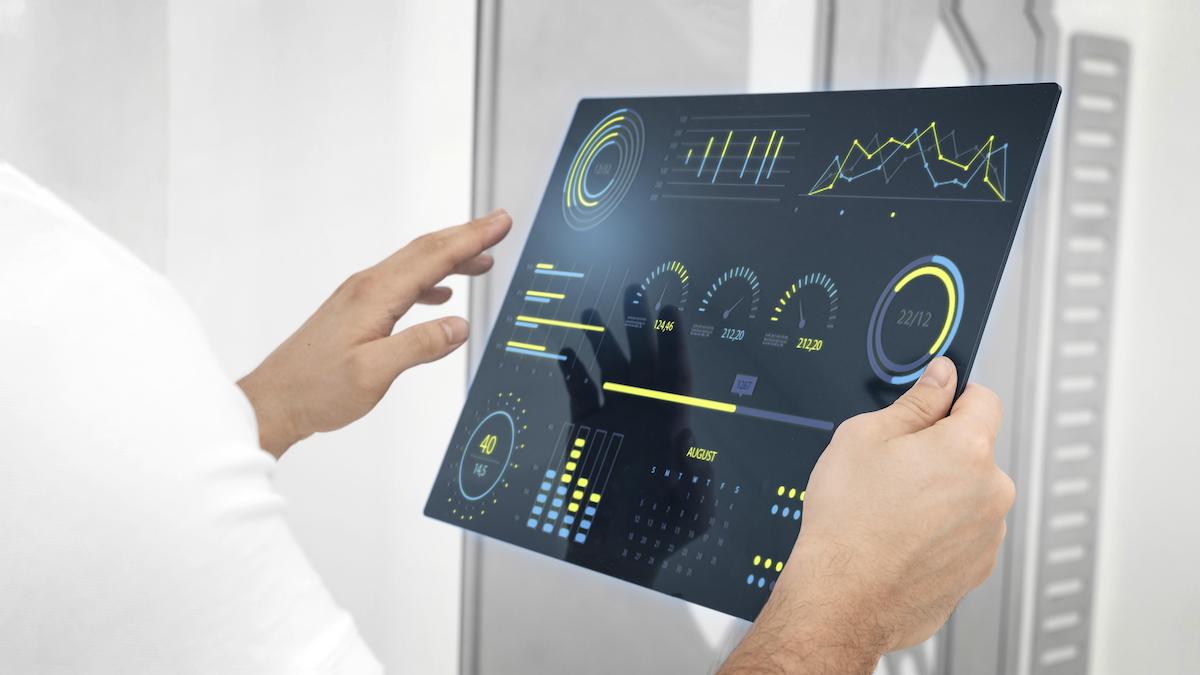[Case study] Monitor central ventilation air filters using IIoT | SPONSORED
The central ventilation system at ifm prover gmbh is to be monitored. This includes the filters for the air supply and exhaust as well as the filters of the workstation exhaust system on the ground floor and the first floor. In principle, filters are, in simplified terms, a resistor in a system. Foreign particles that do not belong to the medium clog the open meshes or pores of the filter. This increases the total resistance. For this reason, the flow rate decreases while the pressure remains constant. The performance of the system is increasingly impaired as a result. This can be bridged up to a certain point by increasing the conveying pressure, which, however, also increases the energy requirement. Depending on the required filter performance, it must be considered and decided on a case-by-case basis when is the ideal time to replace the filter.
Use cases for filter monitoring in the production process:
- Product and process quality assurance
- Optimize energy consumption
- Maintenance organization
- Meet air quality requirements (fine dust, air purity, extraction efficiency)
The initial situation: Regularly scheduled replacement
Maintenance of the ventilation filters took place at fixed time intervals. No central monitoring existed and no alerts (email, ticket) were issued when a filter change was necessary. The current condition was only visualized locally by a device on the filter. As a result, the filter was either replaced prematurely or too late. This entailed additional operating costs for filter replacement, disposal, energy consumption and downtimes. An analysis, e.g. to optimize fault detection (filter breakage, no filter installed, clogging) was not possible due to the lack of data. Potential for improvement was identified in the storage of history data.
Goal of the project: Predictive condition-based replacement
Implement a needs-driven filter replacement strategy and shift from time-based to condition-based maintenance. This optimization was to be achieved through automated monitoring and visualization of the filter condition.
A defined group of email recipients in the maintenance department was to receive a filter replacement notification, with filter changes only taking place when necessary due to their condition. In order to be able to identify further optimization potentials, the aim was to enable users to analyze the data.
Implementation: Filter differential pressure measurement
At ifm prover gmbh, moneo RTM is centrally installed on a server. The IO-Link master is connected to the server via an internal VLAN and the sensors are connected to the master via IO-Link. A differential pressure sensor with an analog output was installed at the filter. The signal is read by an IO-Link converter (DP2200), converted into an IO-Link process value and transmitted to the IO-Link master with IoT interface (e.g. product AL1350).
moneo RTM cyclically registers the process values via this IO-Link master. The analog current values received in this way are further processed via the “Calculated values” function by converting them into a process value in the unit Pascal. This process value corresponds to the actual sensor.
The thresholds for a filter change were taken from the data sheet of the relevant bag filter and configured as limit values in moneo RTM. In order to prevent critical situations from occurring, a corresponding user group is stored in the ticket processing rules area, which is notified when limit values are exceeded in order to be able to initiate a filter change.
The result: Extended filter life and reduced unplanned downtime
The introduction of permanent filter monitoring led to an internal process optimization, from time-based to condition-based maintenance. By detecting faults in good time, machine uptime was secured and quality increased.
Timely alerting in case of necessary filter changes (email, ticket) increased the process quality. The environmental impact and the operating costs (energy, maintenance, material) were sustainably reduced by the new maintenance strategy.
By documenting the maintenance work and storing history data, analyses of possible optimizations of the filter system can be carried out in the future, as sufficient data material is available. Maintenance staff have an application at their disposal that can be easily adapted to customer-specific conditions and that allows process values (differential pressure, conversion of specific units) to be calculated. The use of moneo RTM has already prevented consequential damage to machines and extraction systems.
Bottom line: Value added services with moneo
- Overview and detailed information on the installation on the dashboard
- Recording of data for further optimization
- Possibility to analyze data recording
- Permanent monitoring of the filter condition
- Email notification in case of threshold violation
Read the full case study here.



